Candlesticks and Daggers Interview Series: Kelly Ann Jacobson
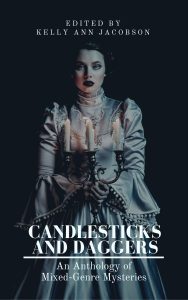 This interview is the first in a series run by contributor Sati Benes Chock that will appear in connection with the brand new anthology Candlesticks and Daggers.
This interview is the first in a series run by contributor Sati Benes Chock that will appear in connection with the brand new anthology Candlesticks and Daggers.
Kelly Ann Jacobson is the editor and publisher of the anthology, and so we shall kick off the series with getting to know her a little better.
***
Sati: Hi Kelly! Looking at your bio, I’m so impressed. You are a literature professor who also finds the time to write short stories, novels, and publish anthologies? How the heck do you find the time to do all of this? Do you sleep? Please tell us you don’t sleep.
Kelly: Thank you so much, Sati! I do sleep, but I don’t do a lot of other things…like clean my house ;). Or fold down the recycled cardboard boxes, which pile up on the 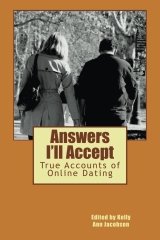 counter and drive my husband nuts.
counter and drive my husband nuts.
Can you tell us a little about how you became a writer? How did you begin? Do you remember your first story?
I definitely remember my first story. I was in kindergarten, and I wrote a book about moving (we had just moved into a new house). My school published the book in their library book program, in which students chosen by their teachers could get their books bound and other students could check them out of the library like a real book. I’ve been writing ever since then.
What do you read for fun?
Ha! This falls under the category of “things I don’t do often.” I used to read constantly, and I still do, only now I read student papers and contributor stories. I teach five classes a quarter, and the school runs all year long. On some weekends, I read 300 pages of literary analysis essays!
When I do have a little time, I read pretty much any genre of fiction—for example, my favorite genre is probably classic literary fiction, but I also really enjoy young adult fantasy. A random selection of books I read this year that I loved: Someone at a Distance by Dorothy Whipple, Atlas Shrugged by Ann Rynd, Eleanor and Park by Rainbow Rowell, and Mistborn by Brandon Sanderson.
Some writers have rituals that they feel helps them with the creative process. Do you employ any rituals, or do anything regularly that helps keep you on track with your writing?
These types of questions are hard for me to answer because I love writing and just do it naturally—it’s a part of my routine, like brushing my teeth. Give me a spare 30 minutes, and I will add a few paragraphs to whatever book I’m working on. I think that kind of process comes from just doing it for so long, and being the type of person who always has a million ideas they want to get down. The problem for me isn’t staying on track when I am writing or getting inspired, but rather just finding the time to sit down and put my thoughts to paper. I try to take at least half an hour a day to write, and little by little, my novels grow.
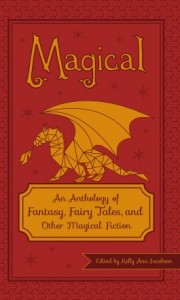 How did you make the transition from writer to publisher? Do you find it hard to keep changing hats–from teacher to writer (and poet!) to editor to publisher?
How did you make the transition from writer to publisher? Do you find it hard to keep changing hats–from teacher to writer (and poet!) to editor to publisher?
Before I started doing my own projects, I volunteered as a Poetry Editor for Outside In Literary & Travel Magazine and interned at a small book press, so I was already very familiar with the role of an editor by the time I started publishing my own books. I didn’t really plan on making the anthologies a reoccurring project, but once I published one, I couldn’t seem to stop. I love giving other writers the opportunity to share their work, especially a new writer who has never been published before—every time I say “that’s it!” I get a nice email from a contributor about how much the book means to them, and bam, I’m back to sending out calls for submissions.
Speaking to the question about changing hats, I think this is something that I’ve “grown up with,” in a way. In college I had three jobs in addition to a full course load at GWU, and within a single day I might go to class, go to the financial aid office, go back to class, and end up at the cupcake shop handing delicious treats to kids all night. In the meantime, I would write on the bus or on napkins at work (which is how I completed the first draft of my first novel—one little scrap at a time). I got used to multitasking.
Now I wake up, write for half an hour, go to class, edit between classes, go back to class, and come home to grade papers. Every few months I finish a book and move on to the next one. The only one that’s hard for me to “slip into” is poetry—it’s a harder genre for me to write, and I need to be in the right headspace, which is probably why I write a lot less poems than anything else. The easiest genre for me to write is young adult fantasy or science fiction.
As a literature professor, what classics do you think short story writers can most benefit from reading?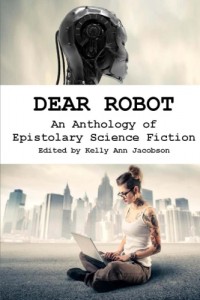
I try to give my students a little bit of everything, the same way I try to read a little bit of everything (except nonfiction—I just always think But it would have been better if they’d changed that to…).
My students really connected with “Silver Water” by Amy Bloom, and a few of them cried. Other stories we read and spend a lot of time on: “An Occurrence at Owl Creek Bridge” (focus on plot), “Cat in the Rain” (focus on finding subtle hints in stories), and “Astronomer’s Wife” (focus on language). We also spend a lot of time on poetry, and again, I try to give them a mix of modern and classic material.
Any advice for anyone considering self-publishing?
Self-publishing is hard. I go into every anthology expecting to lose money, and that has definitely happened before and probably will again. But I don’t publish the books to make money—I publish them because they make a lot of people, myself included, really happy.
If you want to self-publish, the important things to think about are 1) who is going to edit your book and 2) how are you going to market it? It’s so easy to self-publish these days, but it’s hard to promote the book once it’s out. Book stores generally won’t carry it, so you need to personally get the book into a reader’s hands by going to book fairs, speaking on panels, buying ads…anything you can do to sell the book.
I think people don’t realize that promoting a book takes completely different skills than being a writer. In fact, completely opposite skills, in a lot of ways. As fiction writers we like to hide in our rooms and live in our made-up worlds, but to promote, you need to get out and talk to a lot of strangers.
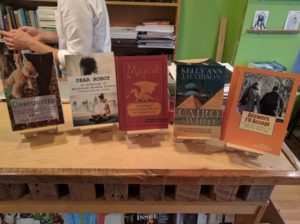 If you could tell beginning writers one thing about the publishing process, what would it be?
If you could tell beginning writers one thing about the publishing process, what would it be?
Get rejected a lot, as early as possible. That probably sounds like really depressing advice, but it worked for me! Rejection is just another part of the “writer life,” and you need to learn to brush it off quickly and get back to work if you hope to make it. Every editor has different tastes, different things they love and hate about a story—if yours doesn’t fit, that doesn’t mean it’s a bad story.
How did you get the idea for Candlesticks & Daggers?
This book actually started as an idea for a book launch party and worked backward to a book. After doing four other anthologies, each with its own book launch extravaganza, I realized it would be really cool to throw a mystery-themed launch. Mystery was a genre I hadn’t done yet, so I figured, why not! But I didn’t just want regular mystery stories—I wanted the weird, quirky stories, the ones that were completely unique and wouldn’t fit in other traditional venues. So I decided to collected mixed-genre mysteries.
I understand that this is your 5th anthology. What were the themes for the other anthologies? Are any of them related in any way?
Yes, I can’t believe it’s already the fifth! They are not really related in any way except that they’re all what I consider to be “new takes on old genres.” Love poems, but about inanimate objects. Science fiction, but only epistolary. Fairy tales, but written for adults.
Any future projects you want to tell us about?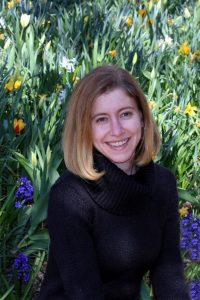
People have been asking me to make a romance anthology…I’m afraid of what might come into my inbox, but also a bit intrigued. Stay tuned!
***
Kelly Ann Jacobson is the author of many published books, including the novel Cairo in White and the poetry collection I Have Conversations with You in My Dreams, and she edits anthologies such as Dear Robot: An Anthology of Epistolary Science Fiction and Unrequited: An Anthology of Love Poems about Inanimate Objects. She works as a professor of English and creative writing instructor. Kelly also writes young adult fantasy novels such as The Sun Dragon Series under her pen name, Annabelle Jay.
Sati,
Great questions! Loved the enthusiasm of both you and Kelly.
And I loved seeing Amy Bloom mentioned. I adored “Love Invents Us”!